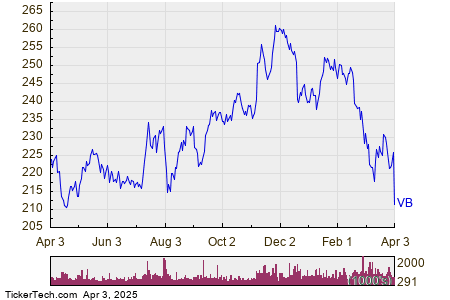Coffee Prices Decline Amid Supply Concerns and Weather Issues
On Monday, May arabica coffee (KCK25) closed down -0.20 (-0.05%), while May ICE robusta coffee (RMK25) dropped -68 (-1.27%). Overall, coffee prices fell, marking a defensive stance throughout the week. The arabica variety hit a one-month nearest-futures low last Thursday, and robusta reached a 2-1/4 month low.
Market pressures on coffee prices stemmed from reduced worries about dryness in Brazil. Somar Meteorologia reported that Brazil’s largest arabica coffee area, Minas Gerais, received 31.1 mm of rain during the week ending March 29, which is 114% above the historical average.
Limited Rainfall Forecast May Hold Prices Steady
Despite the decline, losses were cushioned on Monday after Somar Meteorologia forecasted limited rainfall for Brazil’s coffee-growing regions over the next week to ten days. Additionally, Cooxupe, Brazil’s largest arabica coffee cooperative, warned that last month’s high temperatures and below-average rainfall could adversely impact this year’s coffee yields. Brazil is the world’s largest arabica producer, making these conditions particularly concerning.
Moreover, arabica inventories have tightened, with ICE-monitored arabica coffee stocks falling to a one-and-a-half month low of 770,476 bags on Monday.
Robusta Prices Under Pressure from Supply Projections
Robusta coffee faces downward pressure amid expectations of an increase in global supplies. According to Marex Solutions, Vietnam’s robusta production for the 2025/26 season is projected to reach 28.8 million bags, reflecting a 7.9% increase year-over-year. Brazil’s robusta production is expected to rise 13.6% to 25 million bags during the same period. The robusta supply outlook has improved with ICE-monitored robusta coffee inventories climbing to a seven-week high of 4,414 lots last Tuesday.
Supply Fears Maintain Coffee Price Support
Concerns about supply continue to provide support for coffee prices. Cecafe reported a 12% decrease in Brazil’s February green coffee exports year-over-year, totaling 3 million bags. Furthermore, on January 28, Conab, Brazil’s crop forecasting agency, projected a decline in the 2025/26 coffee crop by 4.4% year-over-year to a three-year low of 51.81 million bags. They also revised their 2024 coffee crop estimate down by 1.1% to 54.2 million bags.
Conversely, Marex Solutions indicated on March 7 that the global coffee surplus for the 2025/26 season is likely to expand to 1.2 million bags, an increase from a surplus of 200,000 bags in the 2024/25 season.
Long-Term Effects of Weather Challenges on Coffee Production
The effects of last year’s dry El Niño weather could result in long-term damage to coffee crops in South and Central America. Rainfall in Brazil has significantly lagged since last April, impacting coffee trees during the crucial flowering stage and complicating the outlook for Brazil’s 2025/26 arabica coffee crop. Brazil is currently experiencing its driest weather since 1981, as noted by the natural disaster monitoring center Cemaden.
Colombia, the second-largest producer of arabica coffee, is gradually recovering from last year’s El Niño-induced drought.
Robusta Production Challenges and Global Export Trends
Robusta prices are additionally being supported by diminished production. Due to drought conditions, Vietnam’s coffee output for the 2023/24 crop year plummeted by 20% to 1.472 MMT, marking the smallest yield in four years. The General Statistics Office of Vietnam reported a 17.1% year-over-year decline in 2024 coffee exports, totaling 1.35 MMT. Additionally, the Vietnam Coffee and Cocoa Association revised its 2024/25 coffee production estimate down to 26.5 million bags from December’s estimate of 28 million bags.
However, the prospect of larger global coffee exports remains bearish for prices. Conab indicated that Brazil’s 2024 coffee exports surged by 28.8% year-over-year to a record 50.5 million bags. Similarly, Vietnam’s coffee exports increased by 6.6% year-over-year in February, reaching 169,000 MT. The International Coffee Organization, however, reported a 12.4% year-over-year decrease in global coffee exports during December, amounting to 10.73 million bags, with total global exports from October to December also down by 0.8% to 32.25 million bags.
USDA Reports and Future Outlook for Coffee Prices
The USDA’s biannual report released on December 18 provided mixed data for coffee prices. The Foreign Agriculture Service (FAS) projected a 4% year-over-year increase in world coffee production for the 2024/25 season, totaling 174.855 million bags. This includes a 1.5% increase in arabica production to 97.845 million bags and a 7.5% increase in robusta production to 77.01 million bags. The FAS also forecasts that ending stocks for 2024/25 will decrease by 6.6% to 20.867 million bags, the lowest level in 25 years.
Separately, the FAS previously estimated Brazil’s 2024/25 production at 66.4 MMT, a drop from prior forecasts of 69.9 MMT. For the same period, the FAS expects Brazil’s coffee inventories to be approximately 1.2 million bags at the end of the 2024/25 season, down by 26% year-over-year.
For the 2025/26 marketing year, Volcafe on December 17 slashed its Brazil arabica coffee production forecast to 34.4 million bags, a reduction of about 11 million bags from earlier estimates due to severe drought. Volcafe also expects a global arabica coffee deficit of 8.5 million bags in the 2025/26 season, widening from the 5.5 million bag deficit forecasted for 2024/25, marking the fifth consecutive year of deficits.
On the date of publication, Rich Asplund did not have (either directly or indirectly) positions in any of the securities mentioned in this article. All information and data in this article are solely for informational purposes. For more details, please view the Barchart Disclosure Policy here.
More news from Barchart
The views and opinions expressed herein are the author’s and do not necessarily reflect those of Nasdaq, Inc.


